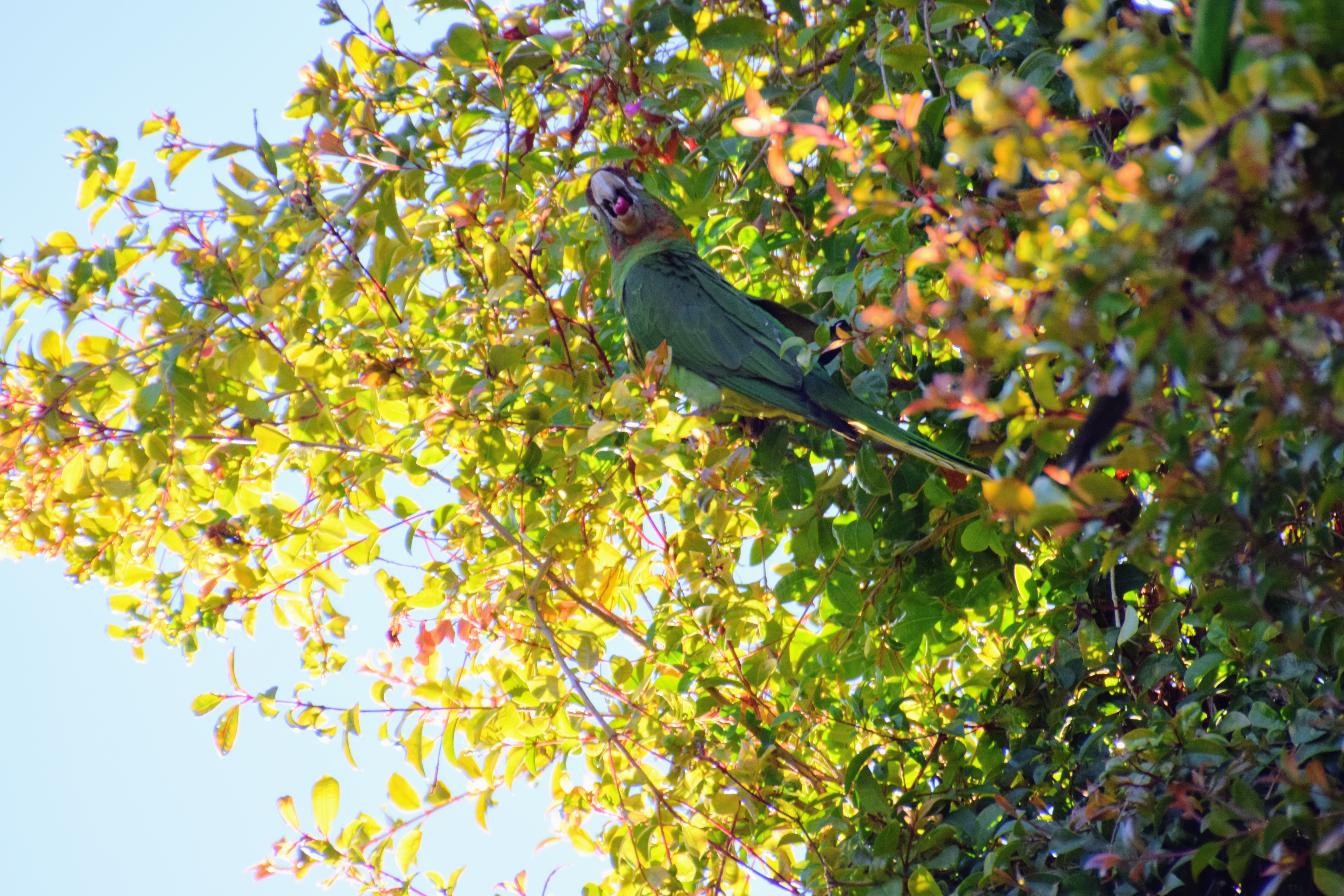If you’ve never read The Wild Parrots of Telegraph Hill, I highly recommend it. It’s the true story of a kind of loser guy who spends all his unemployed time gaining the trust of the feral flock of parakeets that lives in San Francisco’s Telegraph Hill neighborhood in the early ’90s. No one knows exactly where this flock came from, but the leading theory is that there was a pet store with a number of Red-masked Parakeets that caught on fire sometime in the ’80s, and someone released all the birds to save their lives, resulting in a small starter population. As more of this species escaped from pethood either by accident or intentionally, the flock’s numbers swelled. (Pet parrots being released into the wild happens unfortunately frequently. Birds are very noisy, and a lot of work, and are difficult to rehome, so regretful owners sometimes simply let them free outside. But without a starter population, escaped pets can’t form a self-sustaining breeding flock.) By the early ’90s, the San Francisco flock consisted of fortyish individuals, mostly Red-masked Parakeets but with a couple of Blue-crowned Parakeets as well. Their numbers rose and fell over the years, but generally trended upward, and when the flock reached a number too large to make group foraging practical, it splintered. Today, there are a few separate flocks, numbering probably around a hundred individuals.
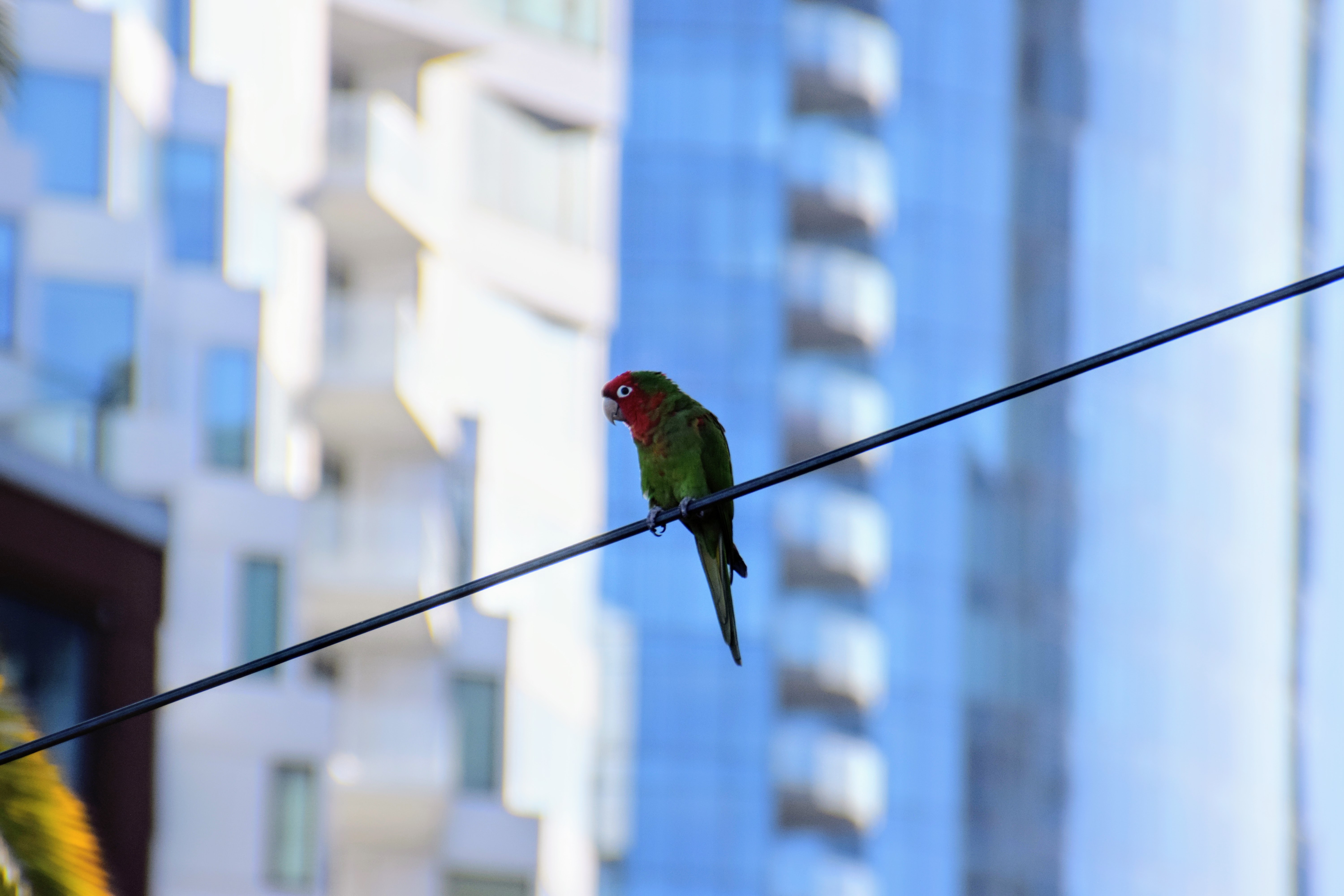
Mark Bittner, the parrot man, recognized and track of individual birds, and had a particularly close friendship with a female he called Dogen. I wonder if Dogen is still alive and part of the flock?
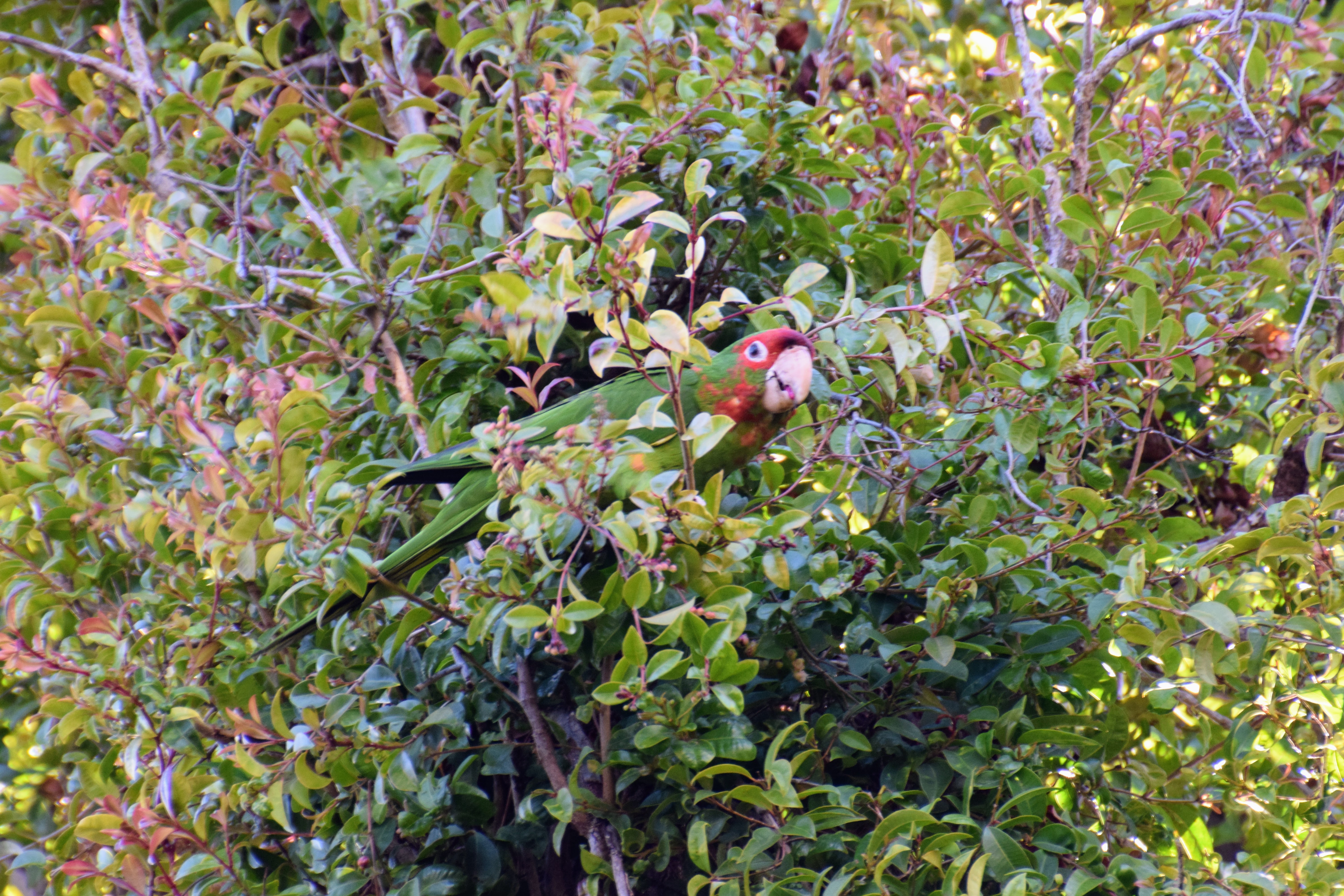
Since I live in San Francisco, I needed to get some photos of these famous birds. Fortunately, they’re easy to track down–everywhere they go, they’re making an incredible racket. Their calls sound a bit like manic laughter, and they persist at a low level during foraging but increase in volume and intensity just before the flock takes off for a new location. According to the parrot man, this is a kind of vocal voting: if an individual wants to leave, he or she starts making a certain vocalization, and if others agree they’ll join in. If the number of votes reaches a critical threshold, the flock leaves.
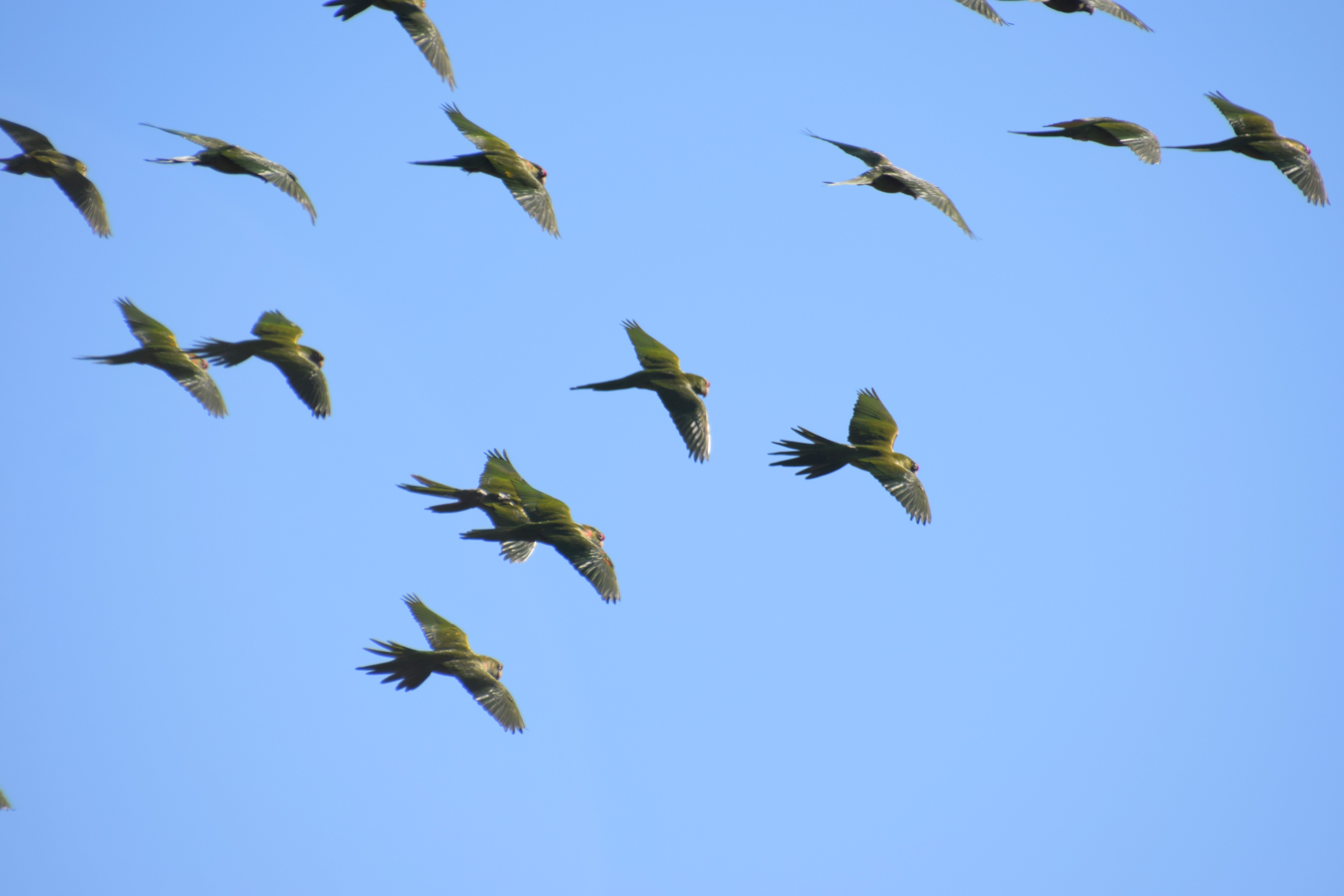
I started at Coit Tower, which crowns Telegraph Hill, and listened. I could hear squawking in the distance. I followed it down the hundreds of narrow steps lining the eastern face of the hill, and found a flock of around twenty hanging out in a small tree just outside what looked like the parrot man’s house. Unfortunately, the lighting condition was pretty bad, so this was the best photo I got at the house.

Just under the deck, a Cooper’s Hawk was biding its time, waiting for one of the parrots to let down its guard.
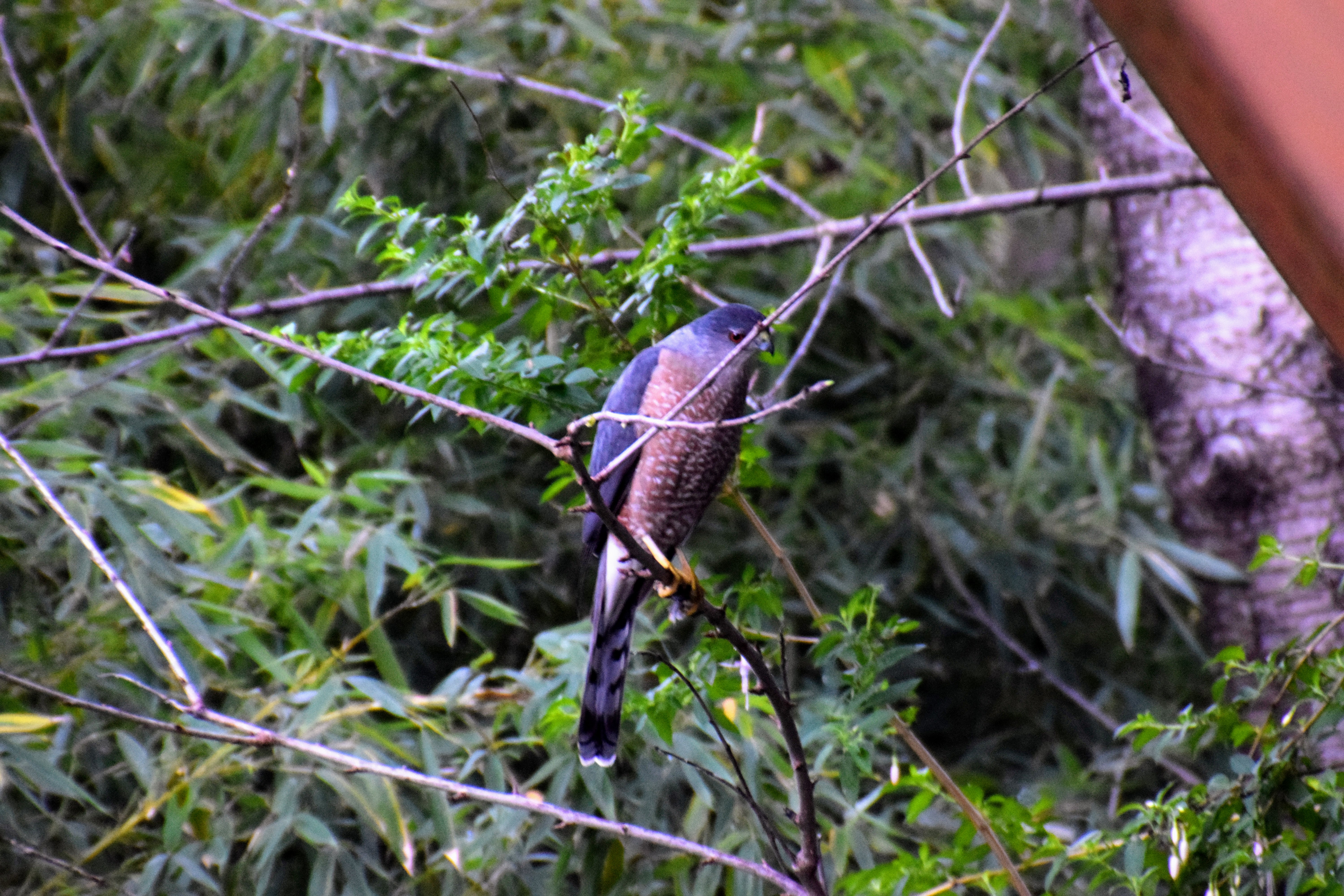
Fortunately for the parrots and unfortunately for the hawk, the flock took off when they saw me pointing my camera at them, and the hawk didn’t get a meal. I continued down the Telegraph Hill steps and went back out to the Embarcadero, hoping to catch a glimpse of the flock I’d heard over there before, in sunnier lighting conditions.
On the Embarcadero, I lucked out, finding a small group foraging on an agave that was blooming in the median. Agave plants are normally spiky, cactus-like, bush-sized things, but occasionally they grow a towering, tree-sized flower. Only one of the twenty or so agave in this location was in bloom, and the parakeets were going ape over it.
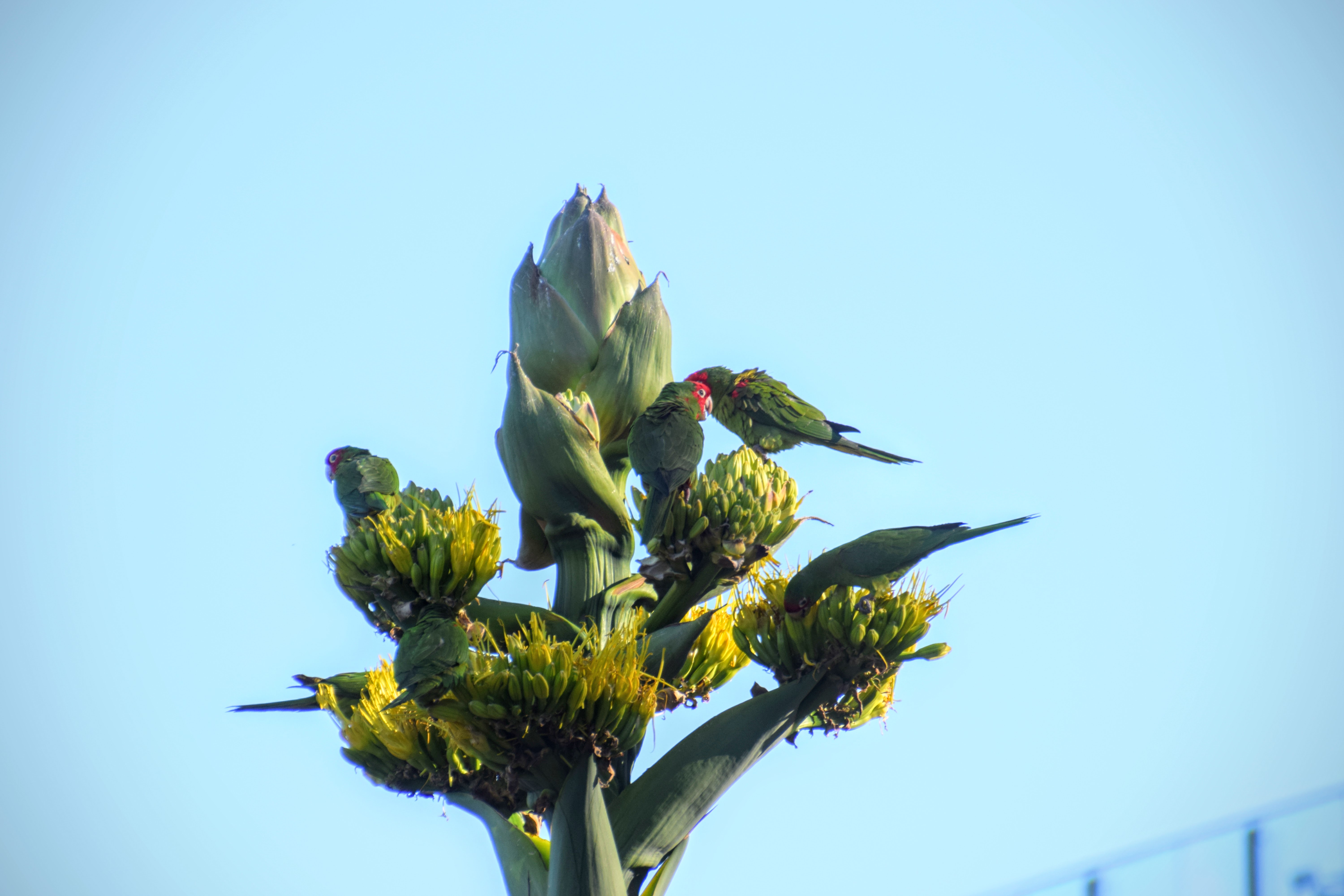
The way that these birds make up for being ridiculously noisy is by posting two sentries who don’t forage, but keep an eye out for danger. The sentries for this group were on a wire across the street.
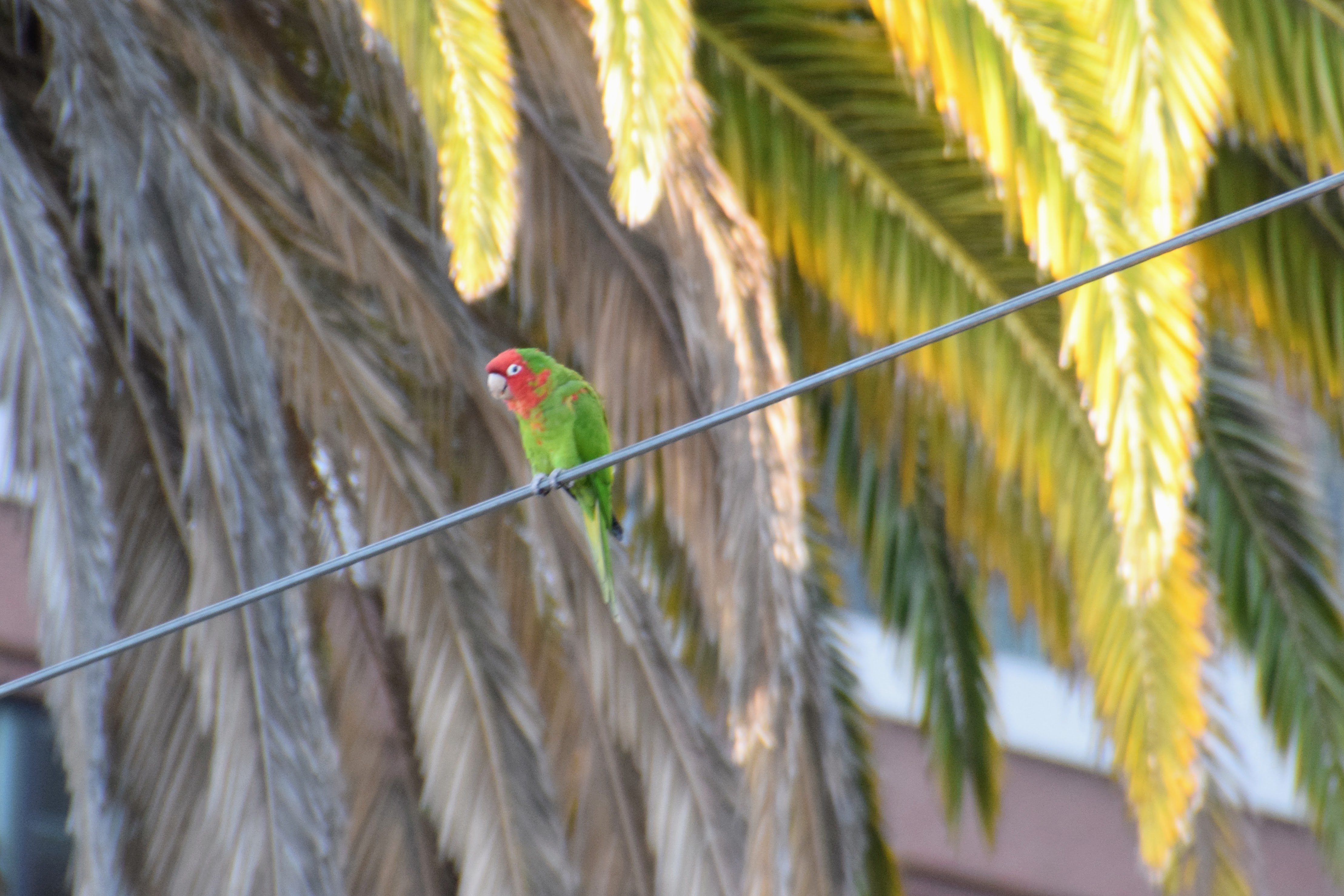
The sentries were okay with me taking their photo, but as soon as I turned my camera on the main group, the sentries sent up the alarm and all the birds took off, alighting on the roof of a skyscraper nearby.
The Wild Parrots of Silicon Valley
Telegraph Hill isn’t the only place that has a persistent flock of feral parrots. There’s also a smaller flock of thirtyish birds that lives near REI in Sunnyvale.
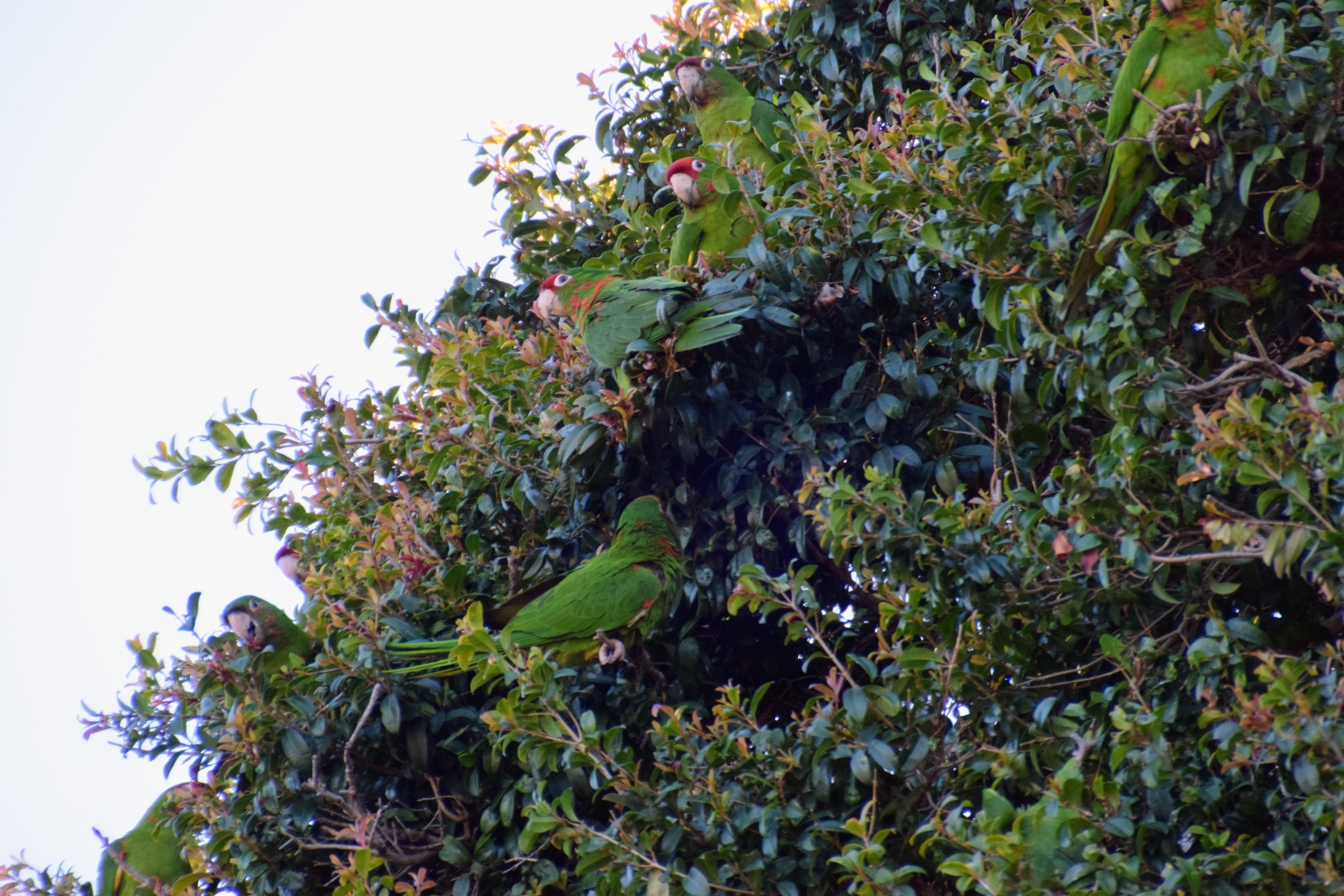
Unlike the Red-masked Parakeets of San Francisco, the Sunnyvale flock appears to be made up mostly of Mitred Parakeets, a closely related species whose range does not overlap in the wild: the two are separated by the Andes. The “mitre” in the name refers to the pointy hat bishops wear. Mitred Parakeets have a less solidly red head, and have more scattered freckles of red around their neck and chest.
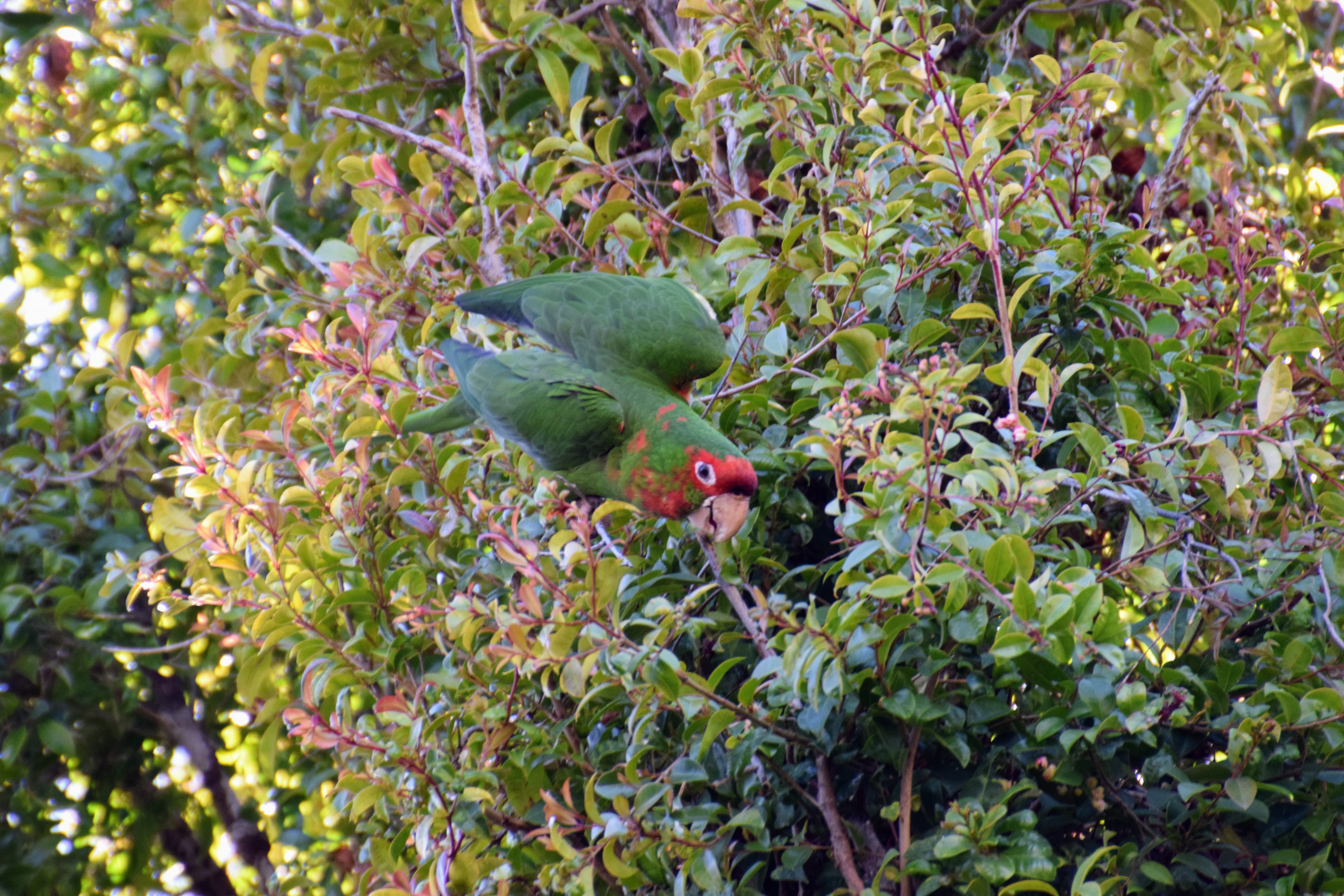
However, since these are all escaped pets and their descendants, there are certainly some Mitred in San Francisco and some Red-masked in Sunnyvale. To make things even more confusing, Mitred and Red-masked Parakeets are so closely related that they can hybridize. Furthermore, juveniles of both species lack the red head, and acquire it gradually, making juvenile Red-masks look a lot like adult Mitres. Here are some juvenile Mitres in various states of doneness:
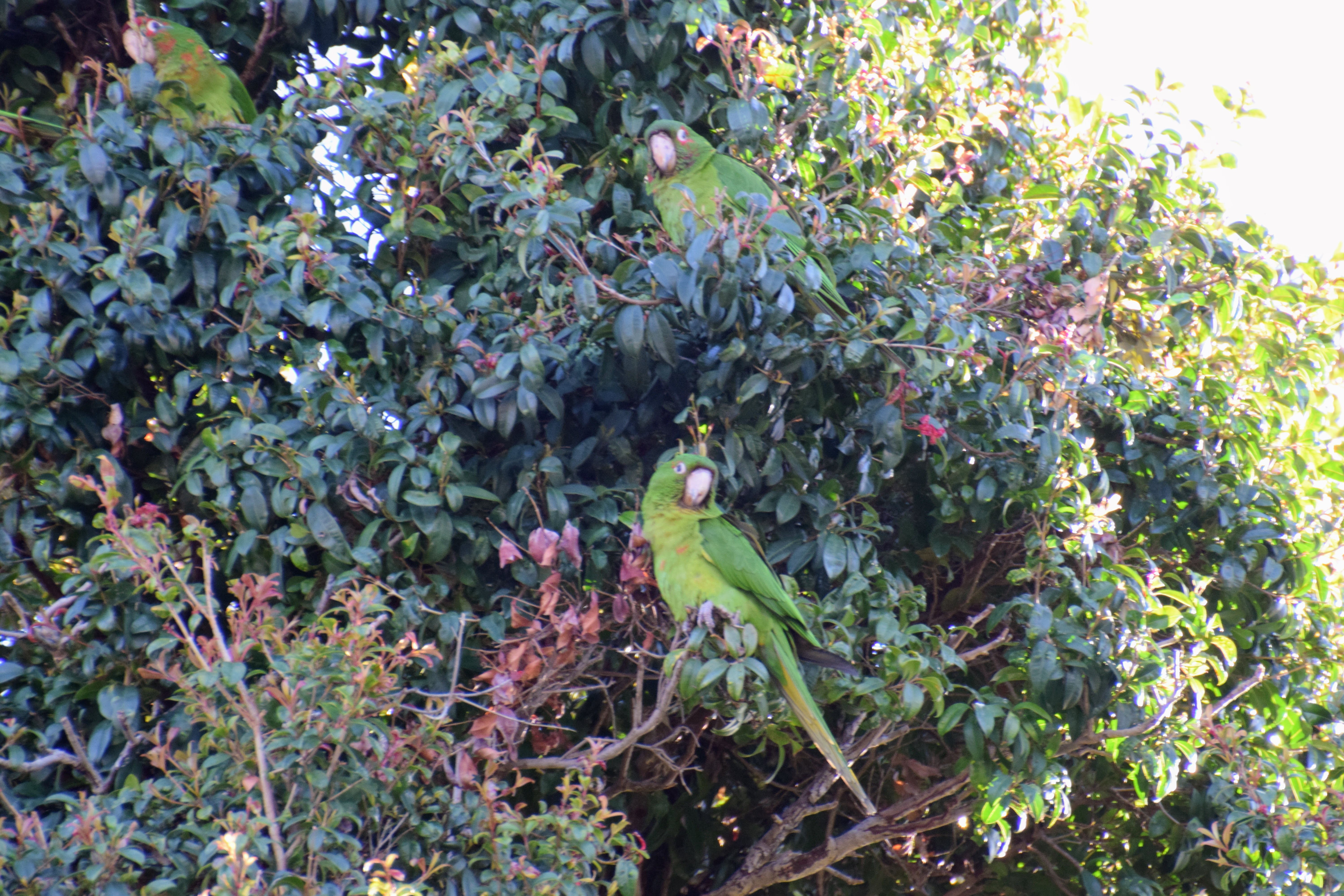
For some reason, the parrots of Silicon Valley are a lot less people-shy than the ones in San Francisco. They didn’t care that I was taking so many photos, or even that I had a dog with me. (The dog was thankfully well-behaved during the photoshoot.)
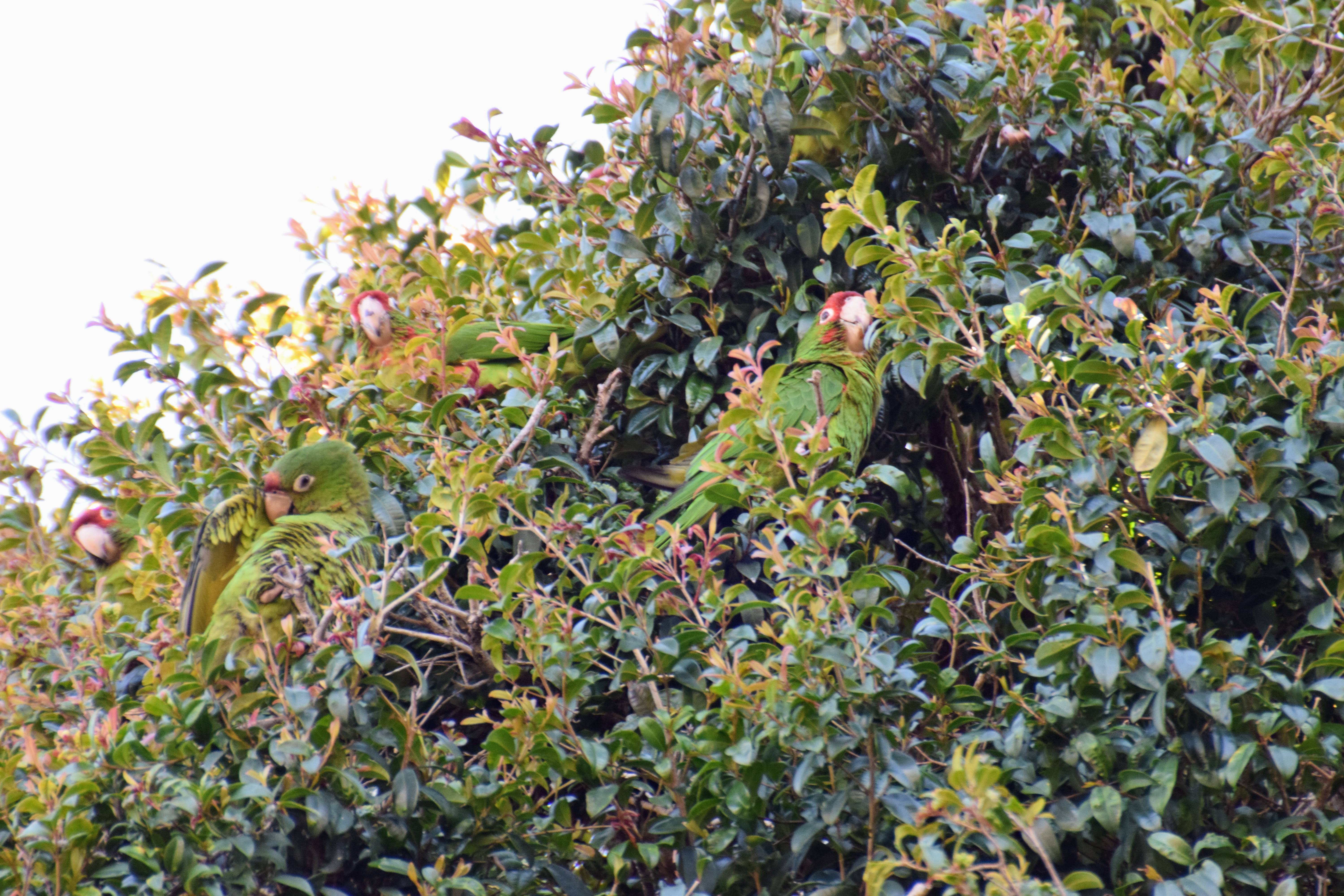
Even so, like the San Francisco flock, the Sunnyvale birds posted sentries across the street.
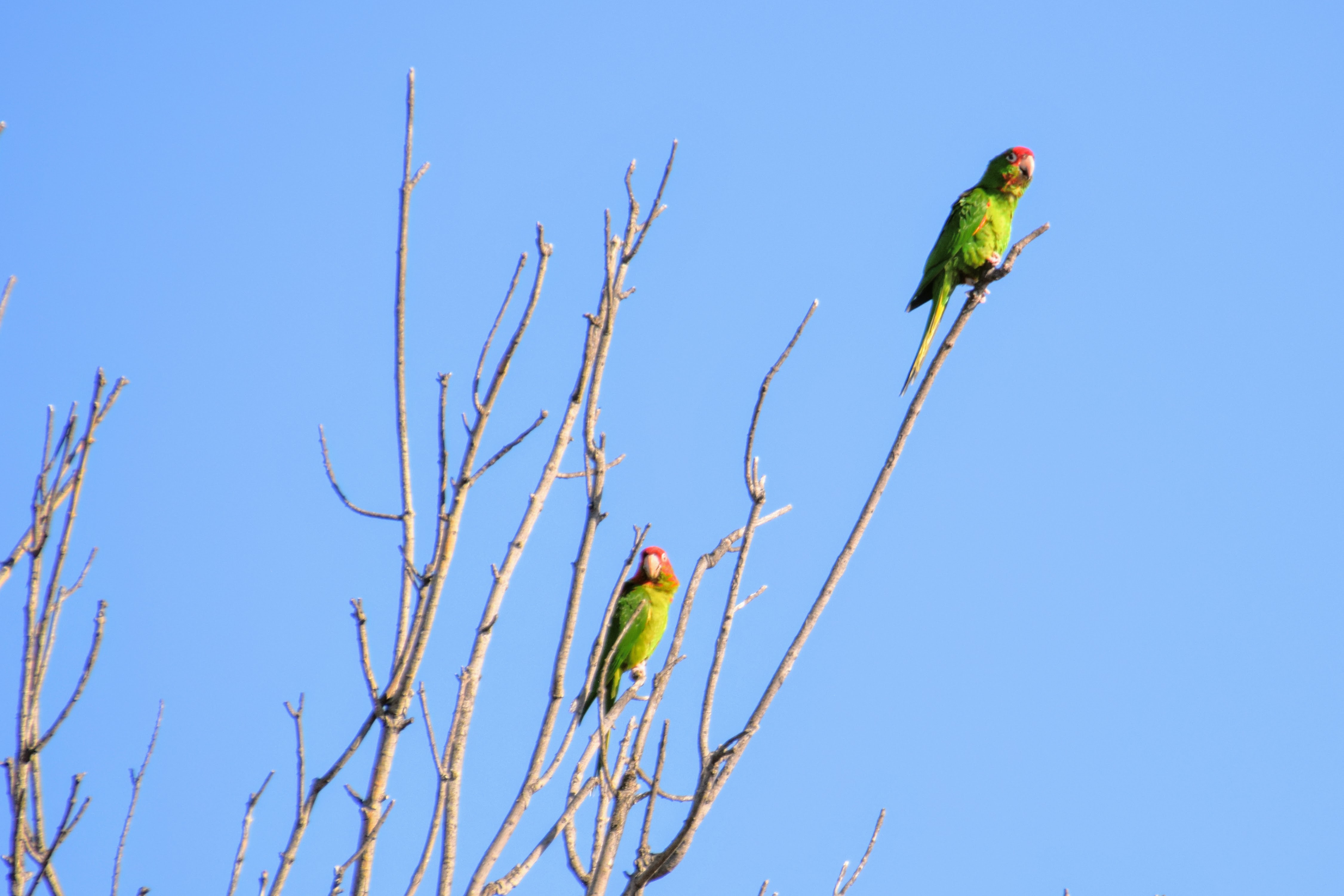
Eventually, two American Crows flew by, chasing a Red-tailed Hawk, as they often do. The flock scattered, shrieking, and uncoordinatedly went in two different directions in the air. The hawk was busy avoiding crow attacks though, and the parrot flock re-formed and left together.

Cedar Waxwings
Another group of birds I’d been meaning to get some photos of for awhile are the Cedar Waxwings that come to Silicon Valley to feast on the abundance of crabapples and Christmas berries (toyon) that appear in late winter.
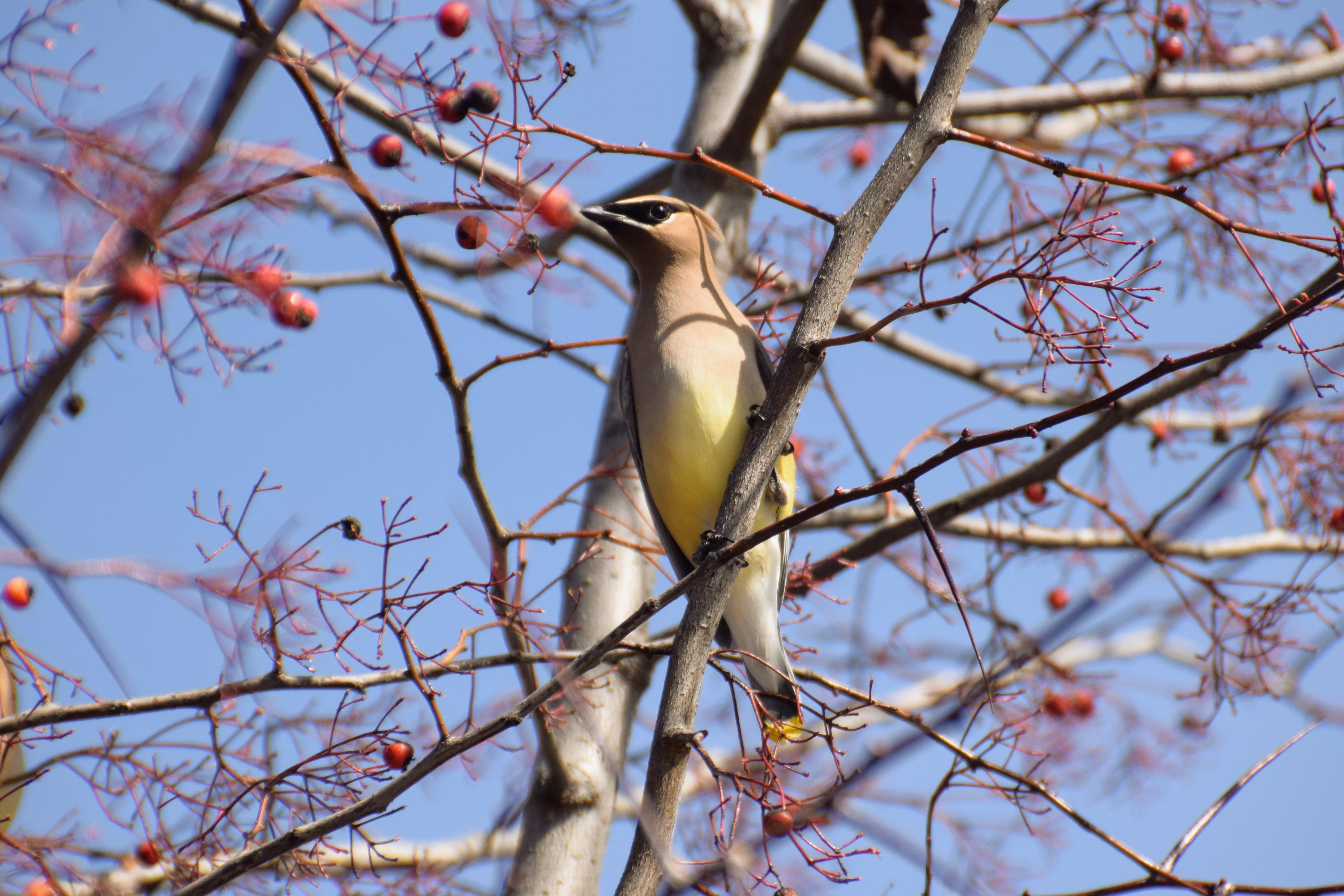
These are small, finch-sized songbirds with a silky-smooth appearance and a fun little head crest. Their name comes from the tiny dab of red on the wings that looks like a bit of sealing-wax, apparently.
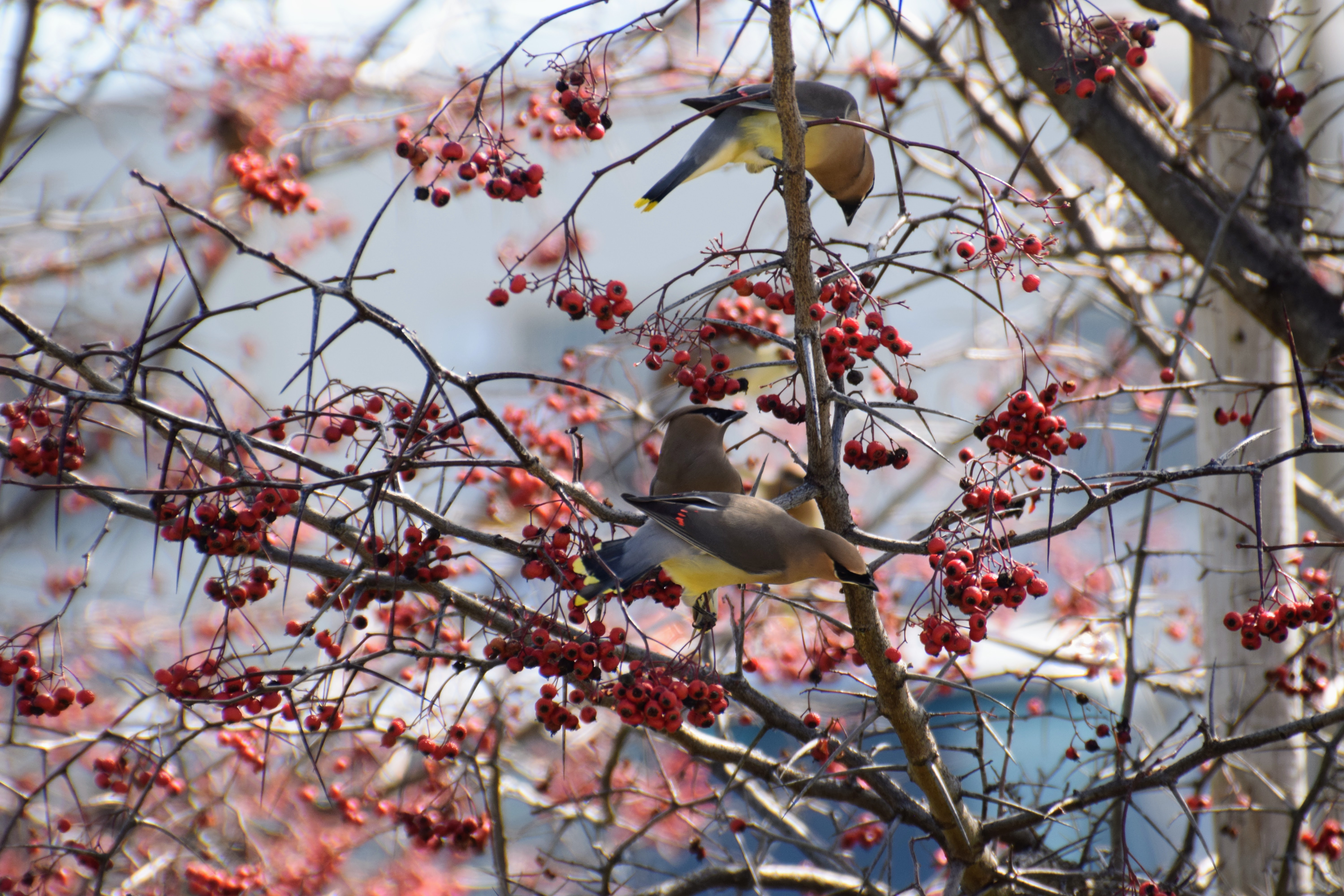
The trees that they’re in here are crabapple trees. Apples don’t come true from seed–that is, if you plant the seeds of a nice big juicy Pink Lady and grow a tree, that tree will bear tiny, sh*tty apples that bear almost no resemblance to the parent.
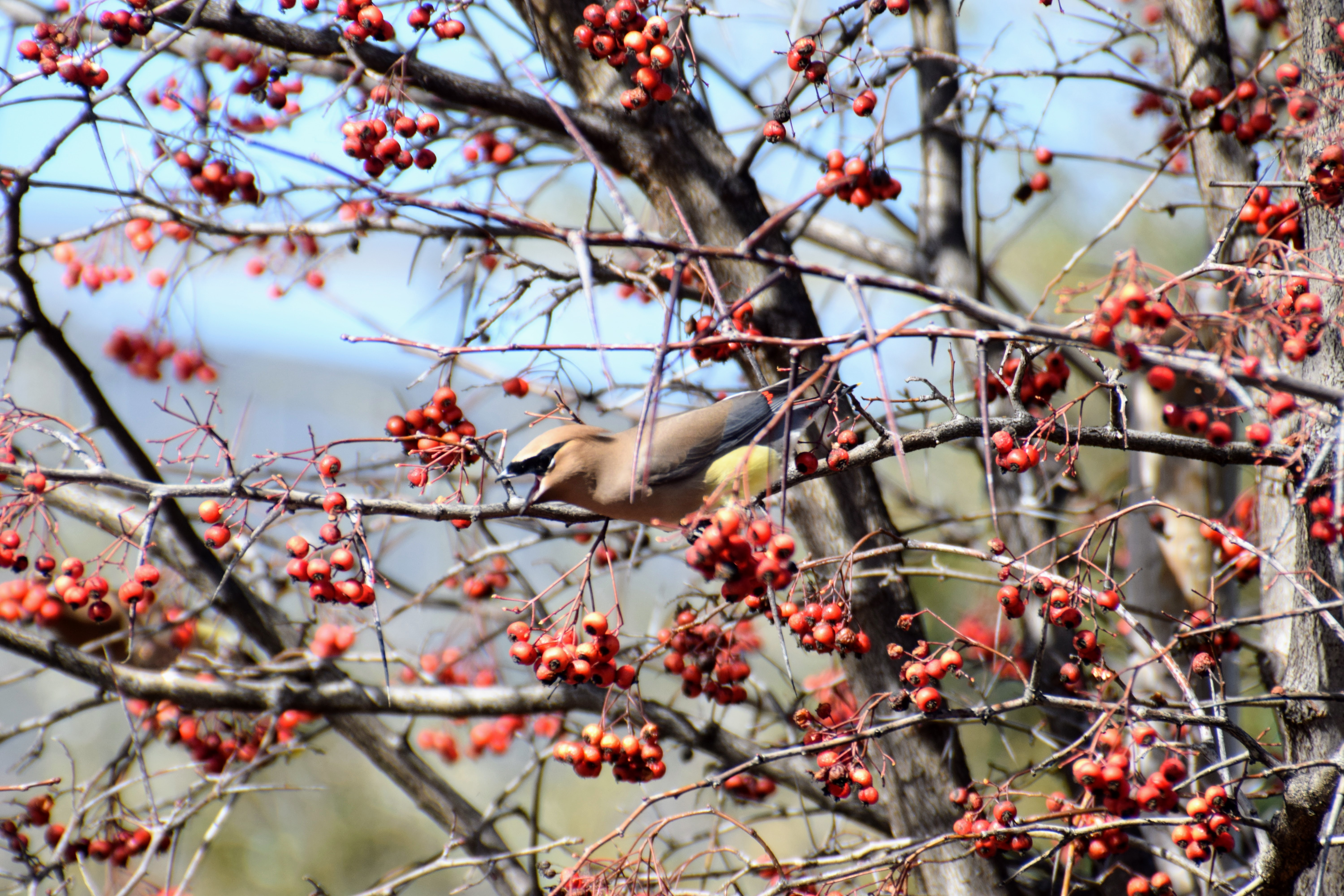
That means that the story of Johnny Appleseed isn’t about bringing sweetness and apple pie to the poor homesteaders of the American West, but about bringing them applejack–that is, liquor. You can read more about that in Michael Pollan’s Botany of Desire.
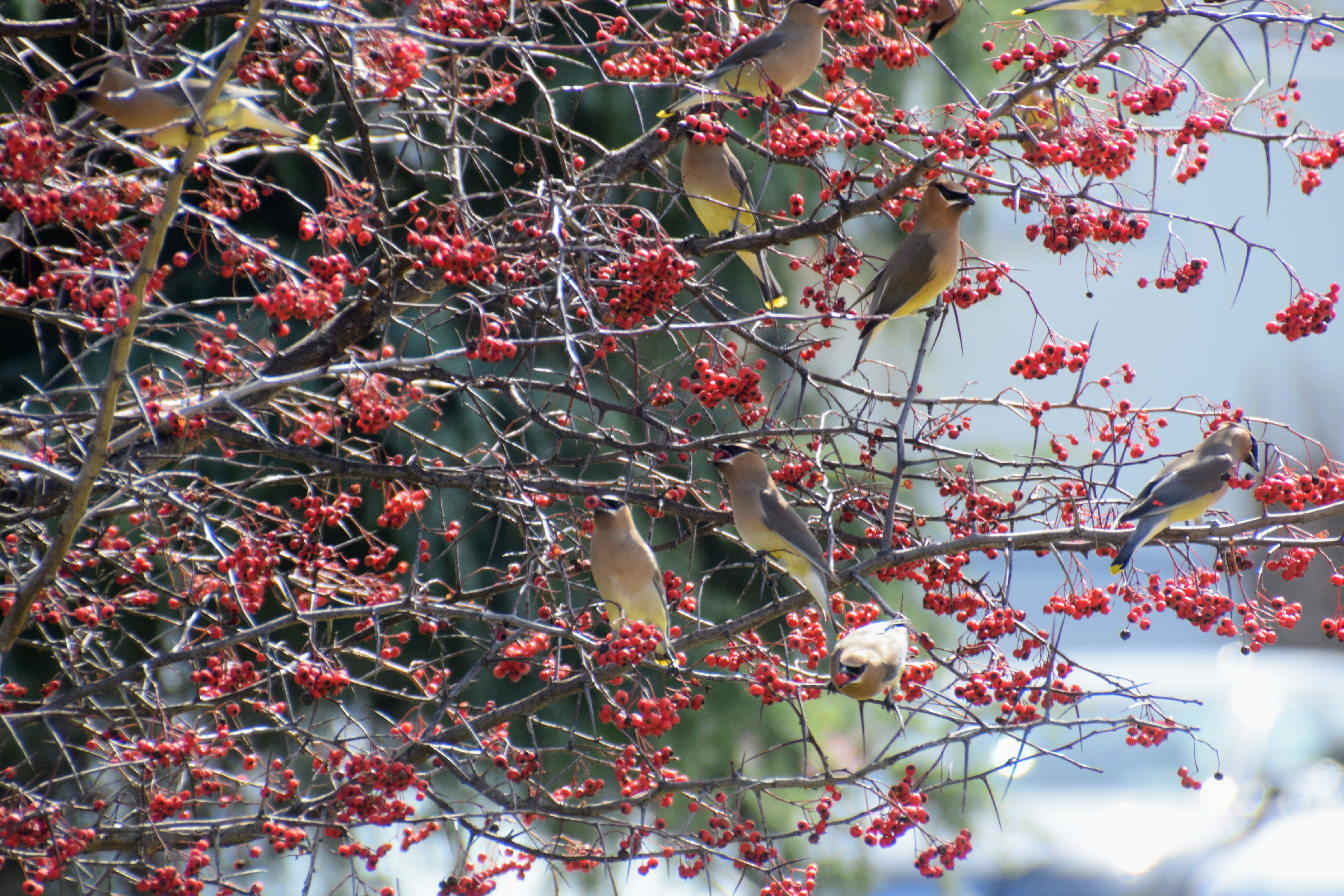
In theory, you could eat these, but they’d be so astringent and sour it wouldn’t be very pleasant. But the birds love them! They pop them like candy. It doesn’t seem possible that so many crabapples could fit in one tiny body and they could remain flight-worthy.
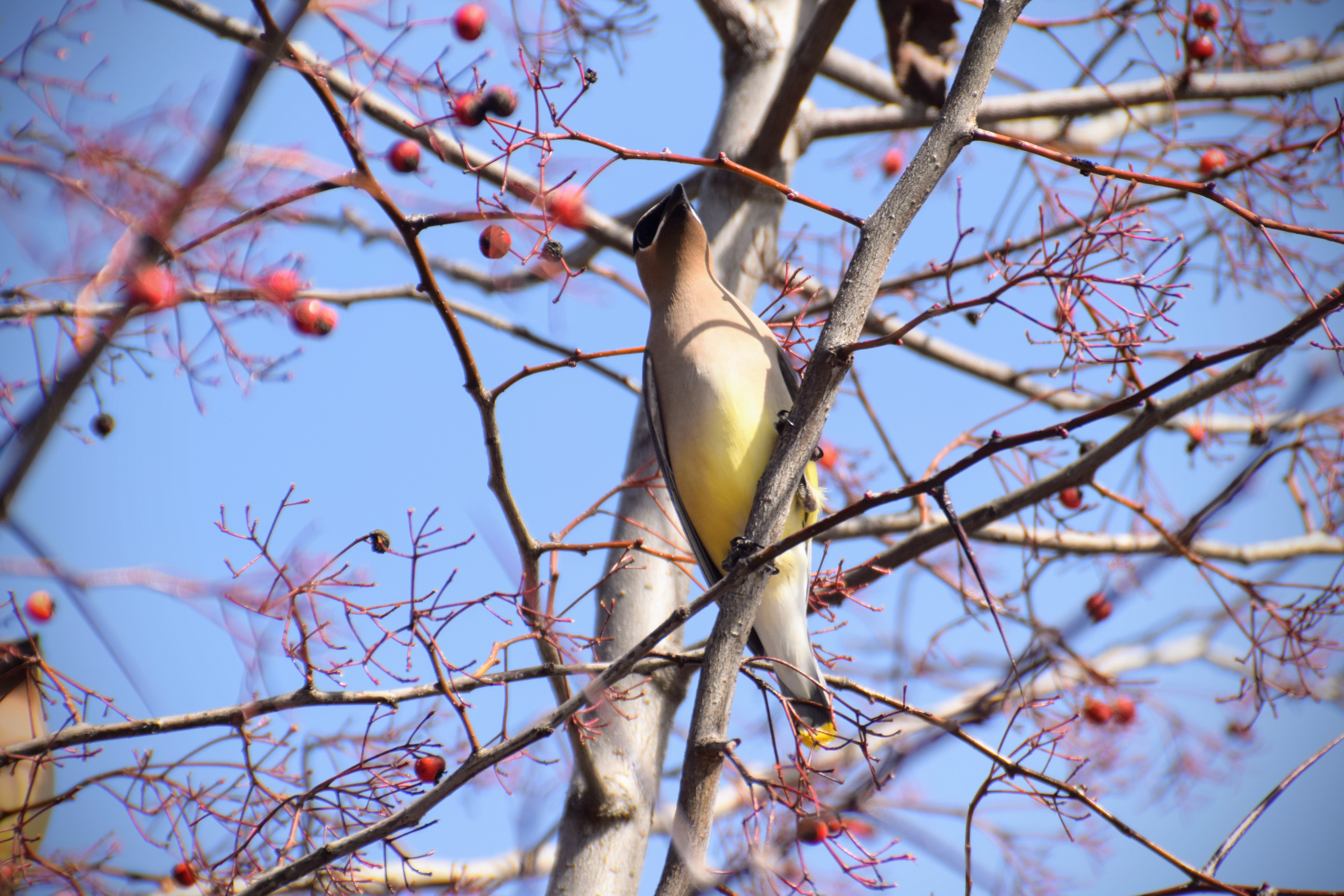
Cedar Waxwings’ diet is 84% fruit, 12% insects, and 4% flowers, which is unusual among birds. Normally, eating that much sugar is pretty bad for you. But Cedar Waxwings excrete the majority of the fruit undigested (64%), only digesting the parts that they need. This low efficiency means they have to consume way more food by weight than other birds, and they poo way more often.
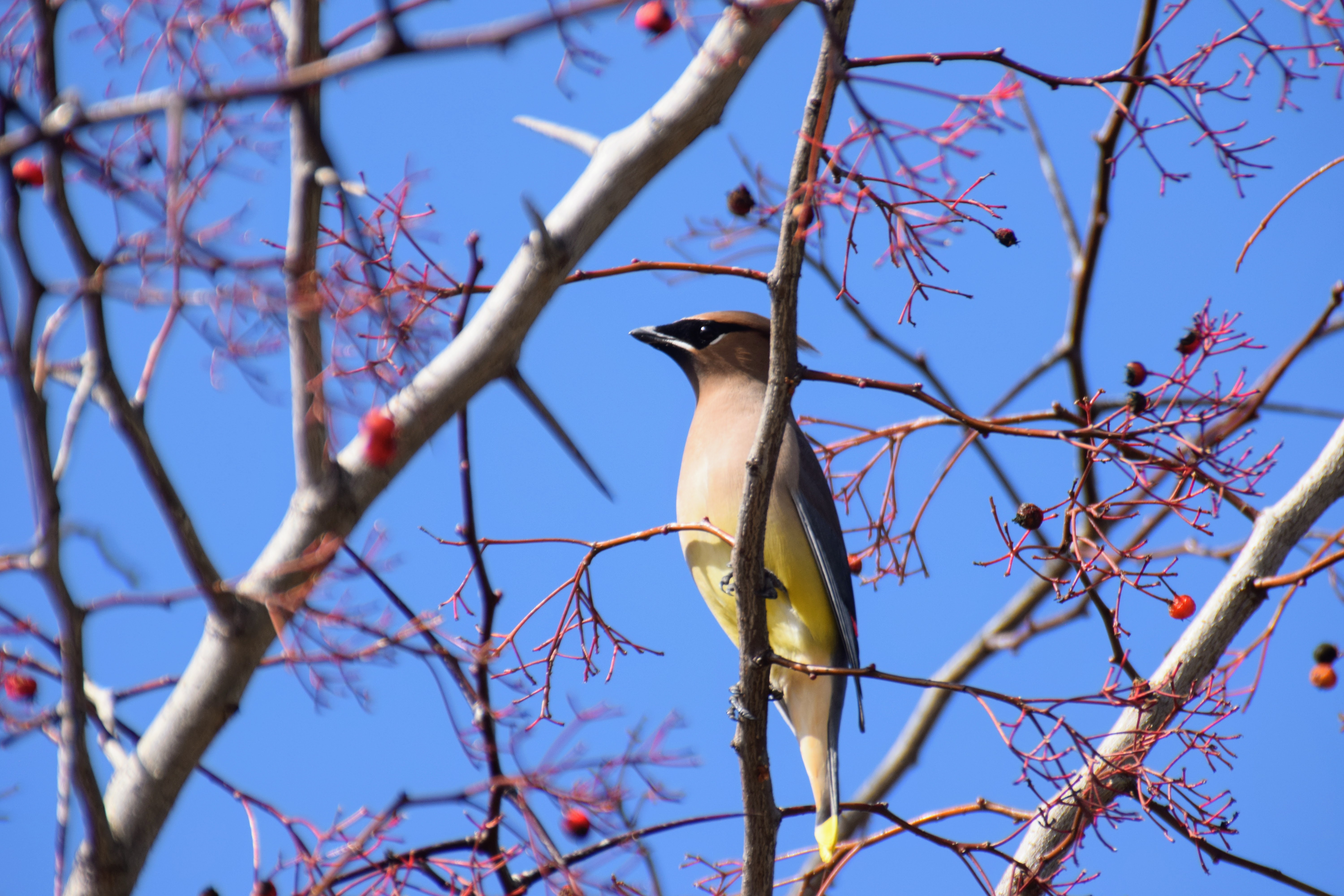
Other Birds
While looking for parrots and waxwings, I happened upon some other birds doing interesting things.

This is a Pine Siskin, a type of finch that’s fairly uncommon for this area. I was lucky it was making noise as it foraged for seeds (I think it was grunting with the effort of extracting them from those spiky balls), or I would’ve missed it.
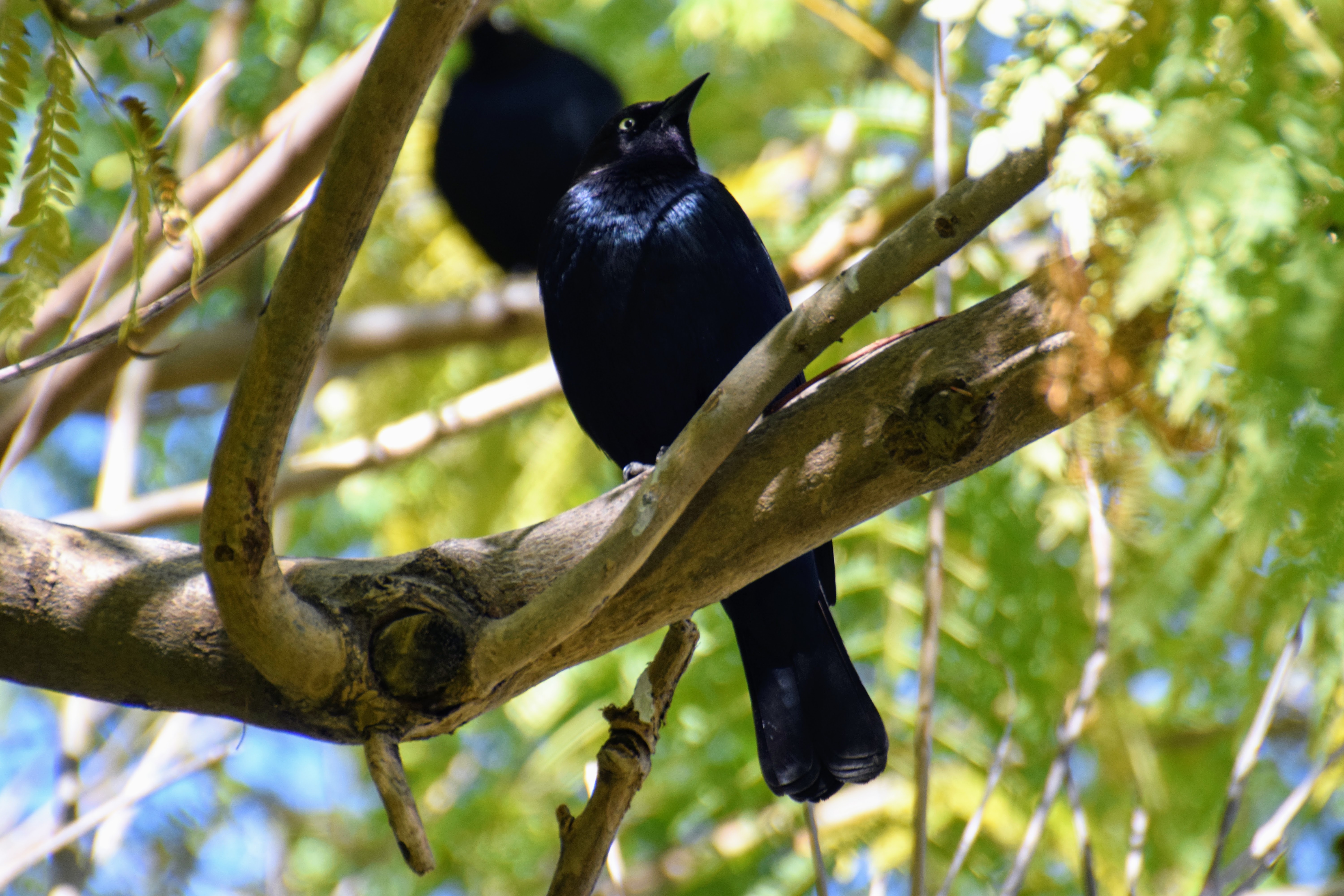
This is a Brewer’s Blackbird, normally found in unphotogenic environments like parking lots. This one was still in a parking lot, but happened to be up in a tree, providing me a photo with better composition than usual for the species.
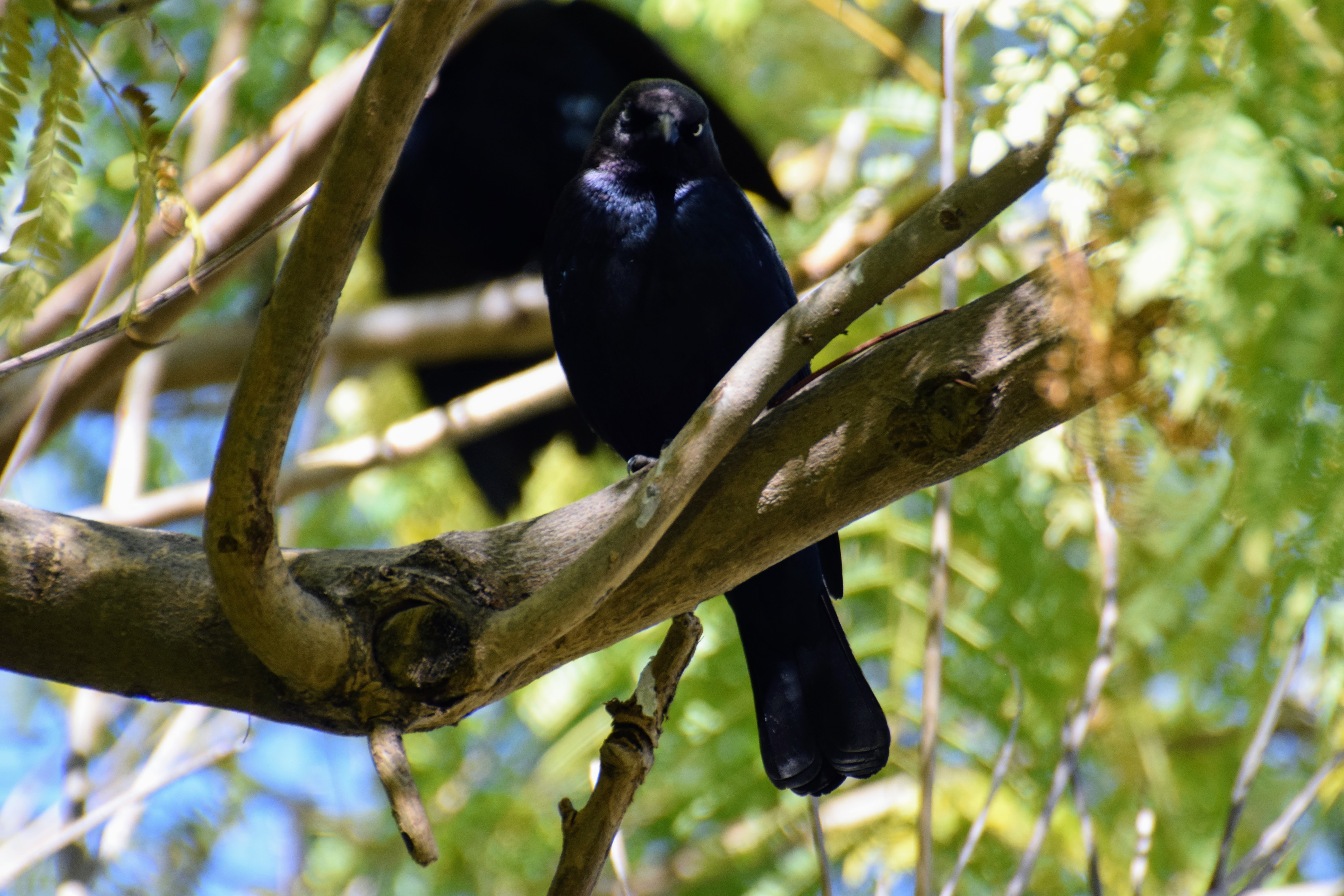
It’s as if he’s posing for me! How vain, he thinks he’s a raven.
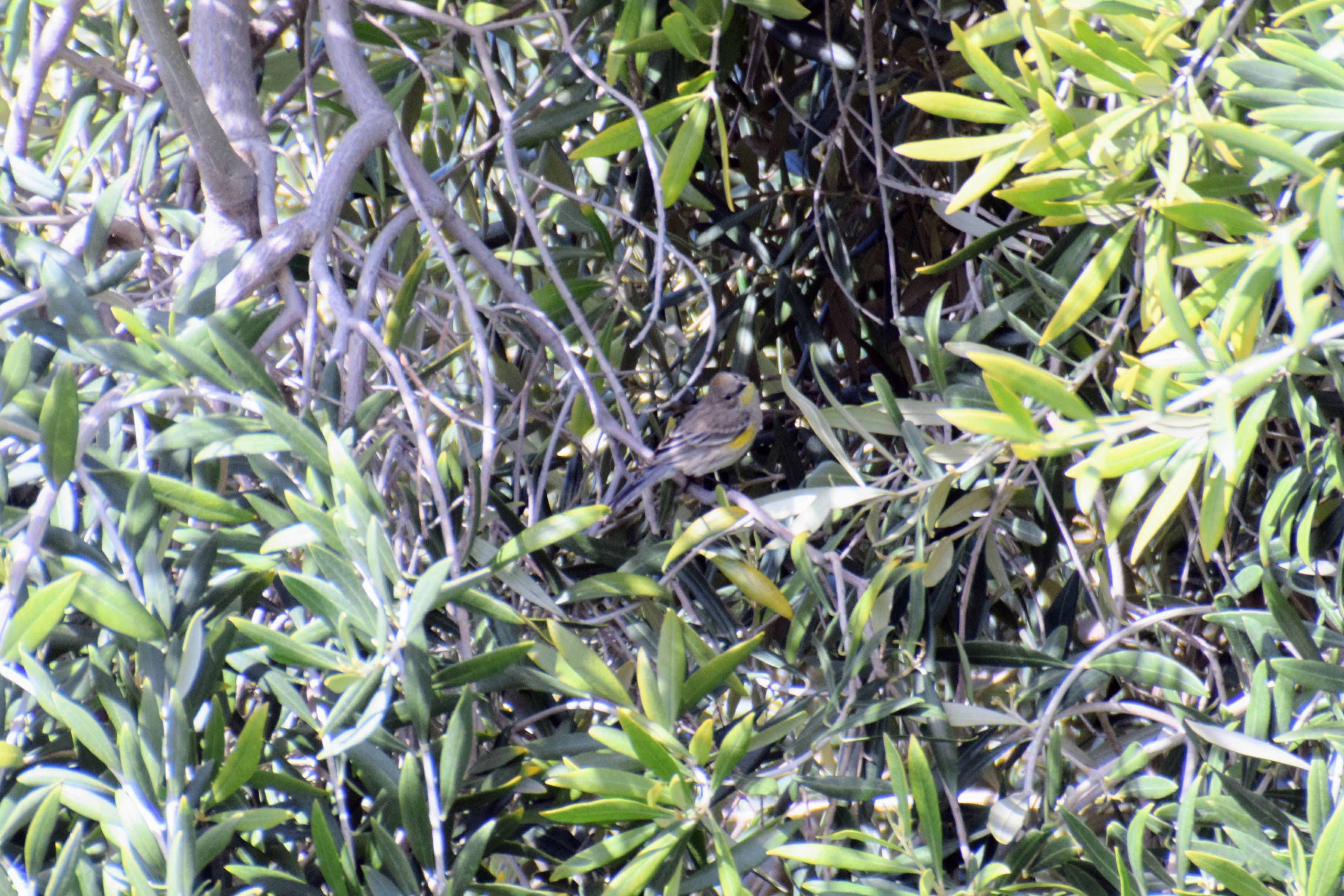
This is an Audubon’s Yellow-rumped Warbler, another winter visitor to California.
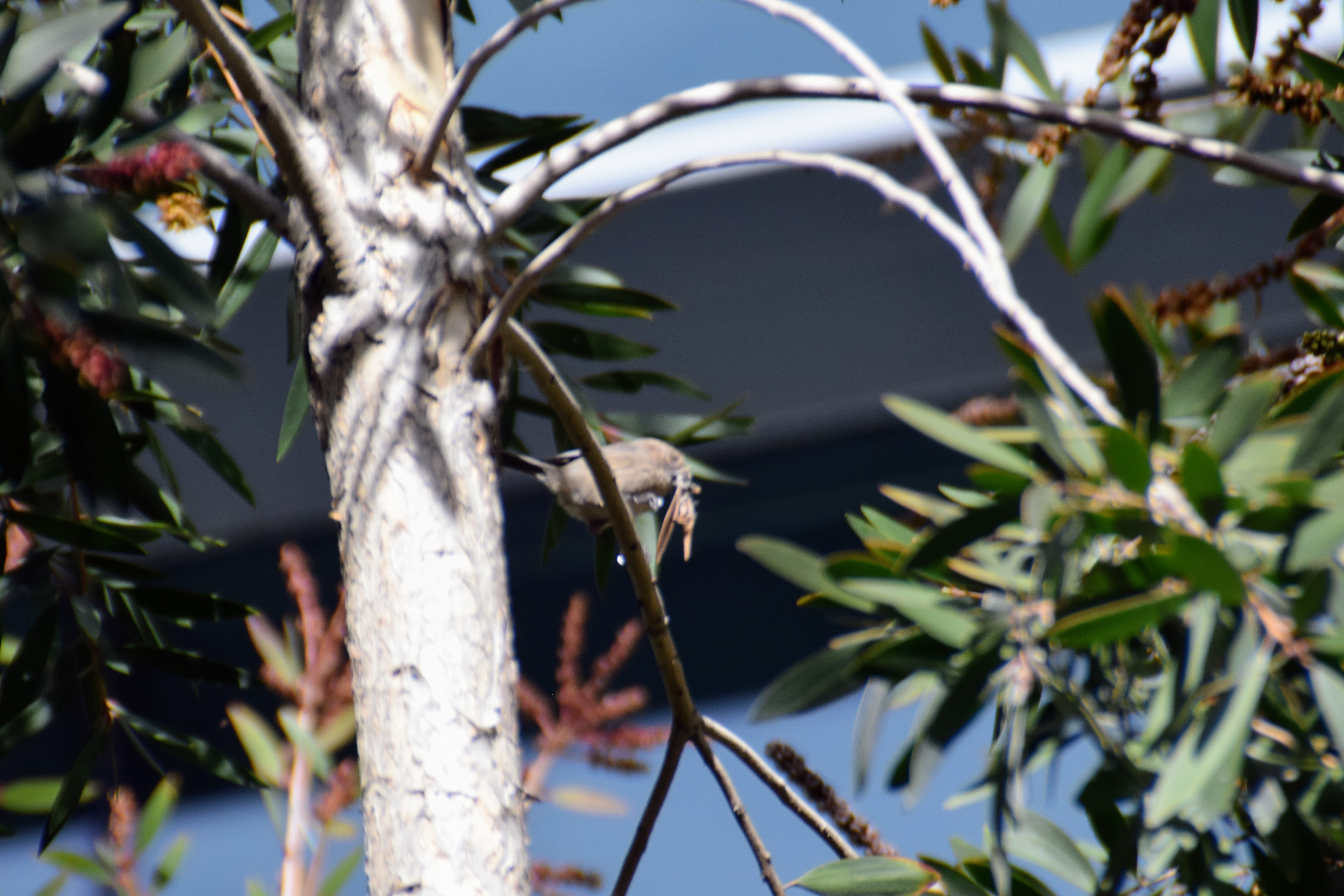
This is a Bushtit who’s caught a big bug of some kind!

This gull found an entire piece of toast somewhere. He or she was being chased by other gulls and eventually dropped the toast. D’oh!

This Anna’s Hummingbird was in such bright light that my camera’s automatic settings chose a super-fast shutter speed that was able to freeze the wings. Lucky me!
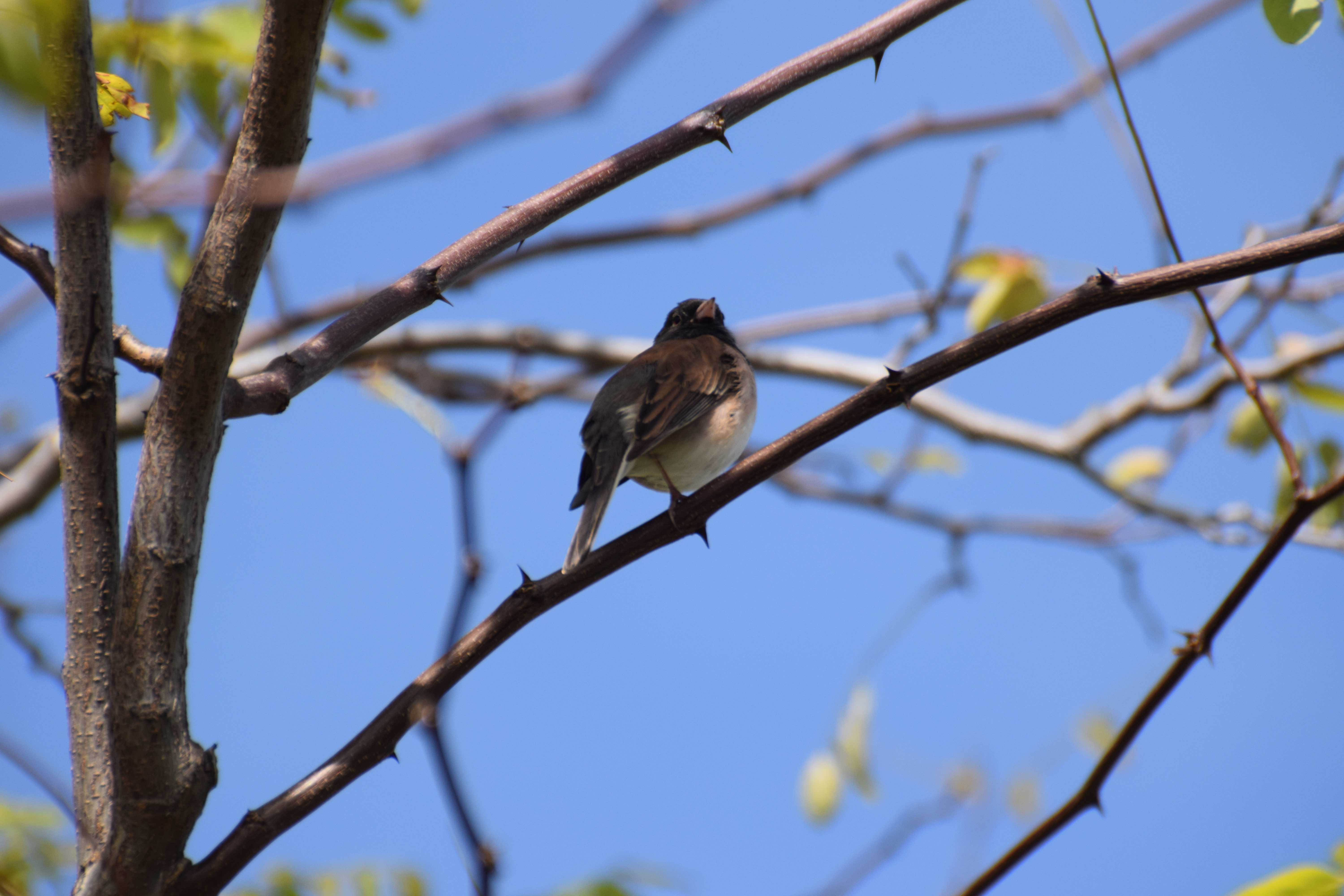
This is a Dark-eyed Junco, also known as a Snow Sparrow.
References
A. (2017, July 5). The Parrots of Silicon Valley: An Ecologist’s Perspective. Accordion Gordon. https://accordiongordon.wordpress.com/2017/07/02/the-parrots-of-silicon-valley-an-ecologists-perspective/
Bittner, M. (2004, January 1). The Wild Parrots of Telegraph Hill. Harmony. http://books.google.ie/books?id=R4wSAQAAIAAJ&q=the+wild+parrots+of+telegraph+hill&dq=the+wild+parrots+of+telegraph+hill&hl=&cd=2&source=gbs_api
Pollan, M. (2001, January 1). The Botany of Desire. Random House Digital, Inc. http://books.google.ie/books?id=FgAgAQAAIAAJ&q=the+botany+of+desire&dq=the+botany+of+desire&hl=&cd=1&source=gbs_api

